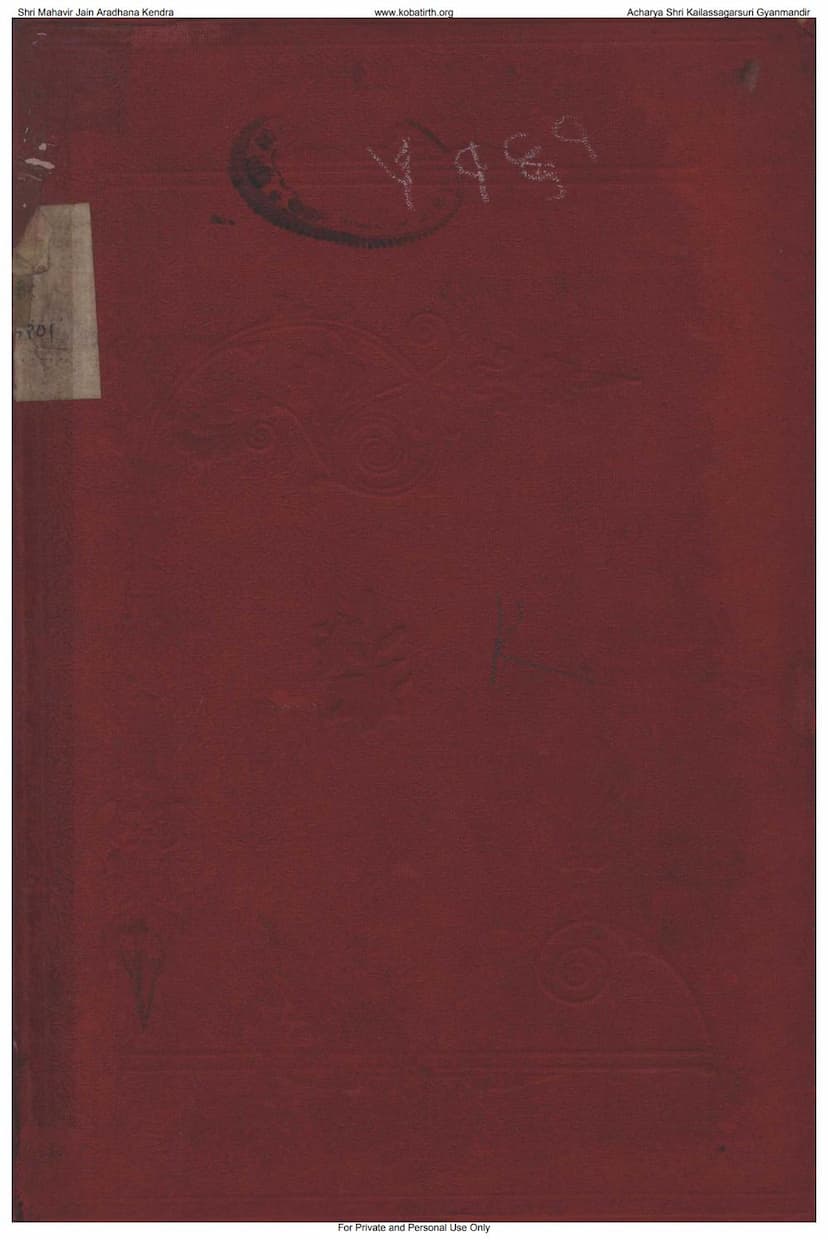Prakrit Vyakaranam
Added to library: September 2, 2025

Summary
This document is a summary of the Prakrit Vyakaranam (grammar of Prakrit) by Narmadashankar Damodar Shastri. It's essentially a detailed explanation and commentary on the grammar rules of Prakrit, with a particular focus on its connection to Sanskrit and its usage in Jain scriptures.
Here's a breakdown of the key points from the provided text:
1. Importance of Grammar:
- The text emphasizes that without studying grammar, one cannot gain a thorough understanding of any language.
- Specifically, it highlights the necessity of studying Prakrit grammar for a complete knowledge of the Prakrit language, which is closely related to Sanskrit.
2. Prakrit Language and its Significance:
- Prakrit is described as having a close relationship with Sanskrit, making it easier for Sanskrit scholars to learn.
- It is stated that Prakrit is widely used in Jain scriptural texts, making it the "language of Jains."
- It's also mentioned that Prakrit appears in other traditions' literature, such as poetry and drama.
3. The Text's Structure and Content:
- The book is based on the eighth chapter of Acharya Hemachandra Suri's Sanskrit grammar, "Siddha-Hema-Shabdānuśāsana."
- The text explains Prakrit grammar by drawing parallels with Sanskrit grammar.
- It aims to facilitate entry into the Prakrit language and aid in remembering its rules.
- The original text and its translation into Gujarati are provided side-by-side.
- The renowned commentary "Tundika" is included with the original text and its translation.
4. Key Grammatical Concepts Discussed (through examples and rules): The text delves into various aspects of Prakrit grammar, illustrating rules with numerous examples. Based on the provided snippets, these include:
- Introduction to Prakrit: Etymology of the word "Prakrit" is explained (derived from Sanskrit, meaning "natural" or "produced from").
- Letters and Sounds: Rules regarding the use and omission of certain Sanskrit letters (like ङ, ञ, श, ष, विसर्ग, प्लुत) and the transformation of vowels (e.g., ऋ, लृ, ऐ, औ).
- Grammatical Categories: Discussion on the application of Sanskrit grammatical concepts like roots (prakriti), suffixes, gender, case, compounds, and noun declensions in Prakrit.
- Sound Changes: Numerous examples demonstrate changes in vowels and consonants from Sanskrit to Prakrit (e.g., vowel lengthening/shortening, consonant assimilation, dropping of sounds).
- Sandhi (Phonetic Combination): Rules and examples related to the joining of words and sounds.
- Word Formation: Explanations of how words are formed and modified.
- Specific Prakrit Features: The text highlights unique features of Prakrit that differ from Sanskrit, such as the absence of certain letters or specific grammatical rules.
- Examples from Literature: The text uses verses and phrases from Prakrit literature to illustrate the rules, providing their meanings. This includes examples from Jain literature.
- Dūṇḍikā (Commentary): The commentary elaborates on the sutras (rules), explaining their etymology, grammatical derivations, and providing clarification on usage. It also addresses potential ambiguities and offers alternative interpretations based on different scholars.
- Special Cases and Exceptions: The text notes exceptions to rules and specific usages in "Arsha" (ancient) Prakrit or according to certain grammarians.
5. Author's Introduction and Motivation:
- The author, Shastri Narmadashankar Damodar, expresses his initial apprehension about undertaking this work due to his first entry into the Prakrit language.
- He credits his "learned friend," Vakil Mulchand Nathubhai, for inspiring him to pursue this endeavor.
- He humbly requests feedback from scholars for future editions.
In essence, "Prakrit Vyakaranam" by Narmadashankar Damodar Shastri is a scholarly work that meticulously explains the grammar of the Prakrit language, drawing heavily on established Sanskrit grammatical principles and illustrating them with practical examples, particularly in the context of Jain religious and literary traditions. The inclusion of the "Tundika" commentary adds depth and scholarly rigor to the explanations.